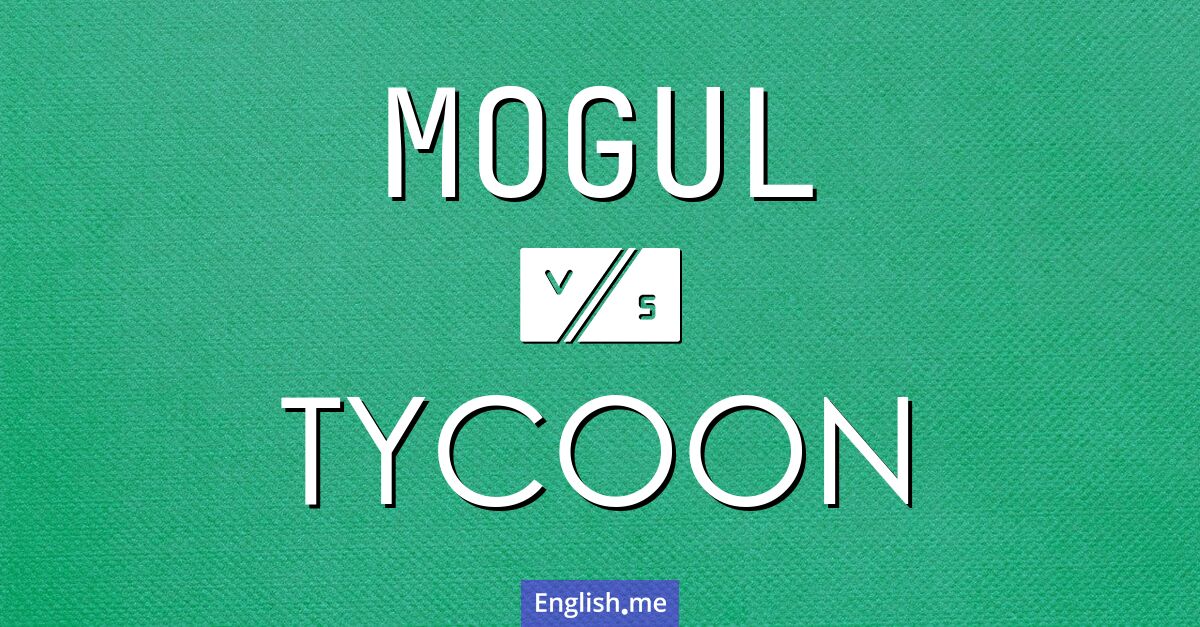"Mogul" vs. "tycoon": power words with distinct stories
Reviewed and edited by  Lloyd Cooper 29/05/2025, 04:34
Lloyd Cooper 29/05/2025, 04:34
English.me team member

 What is similar?
What is similar?
Both "mogul" and "tycoon" refer to powerful and successful individuals in business or industry, often implying great wealth and influence.
 What is different?
What is different?
"Mogul" can also refer to a historical ruler (especially in reference to the Mughal Empire) and has origins tied to imperial India, while "tycoon" specifically refers to wealthy businesspeople and comes from a Japanese word meaning "great lord". "Mogul" sometimes is used in other contexts, such as skiing (bumps on a slope), but "tycoon" is almost exclusively used for influential business figures.
 Which one is more common?
Which one is more common?

 Examples of usage
Examples of usage
Mogul- She became a media mogul before the age of 35.
- The real estate mogul donated millions to charity.
- Hollywood moguls gathered at the awards ceremony.
- The young tech tycoon revolutionized the smartphone industry.
- Oil tycoons once controlled much of the nation's economy.
- He aspires to be a tycoon in the world of finance.

 English
English español
español française
française italiano
italiano deutsche
deutsche 日本語
日本語 polski
polski česky
česky svenska
svenska Türkçe
Türkçe Nederlands
Nederlands